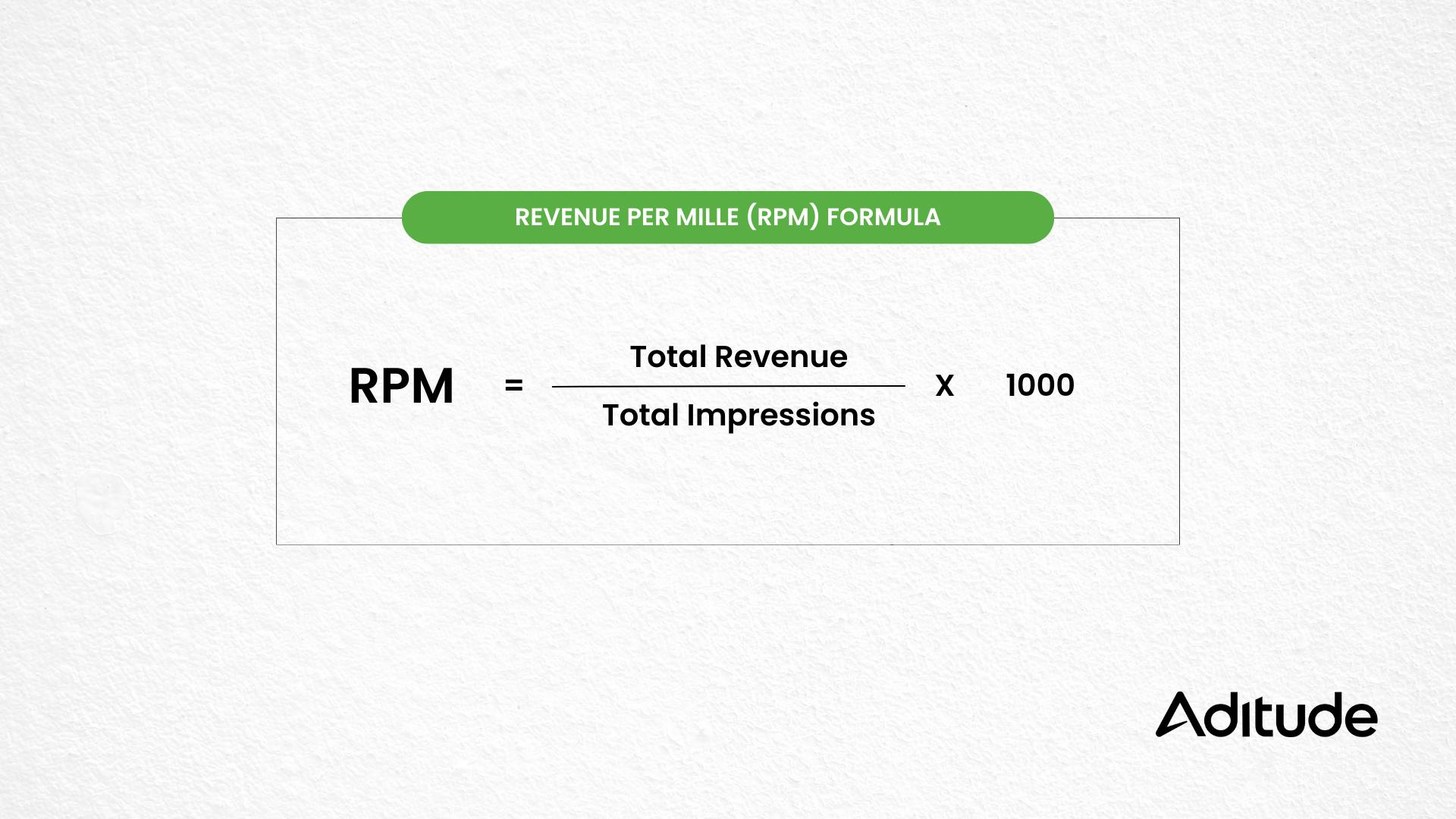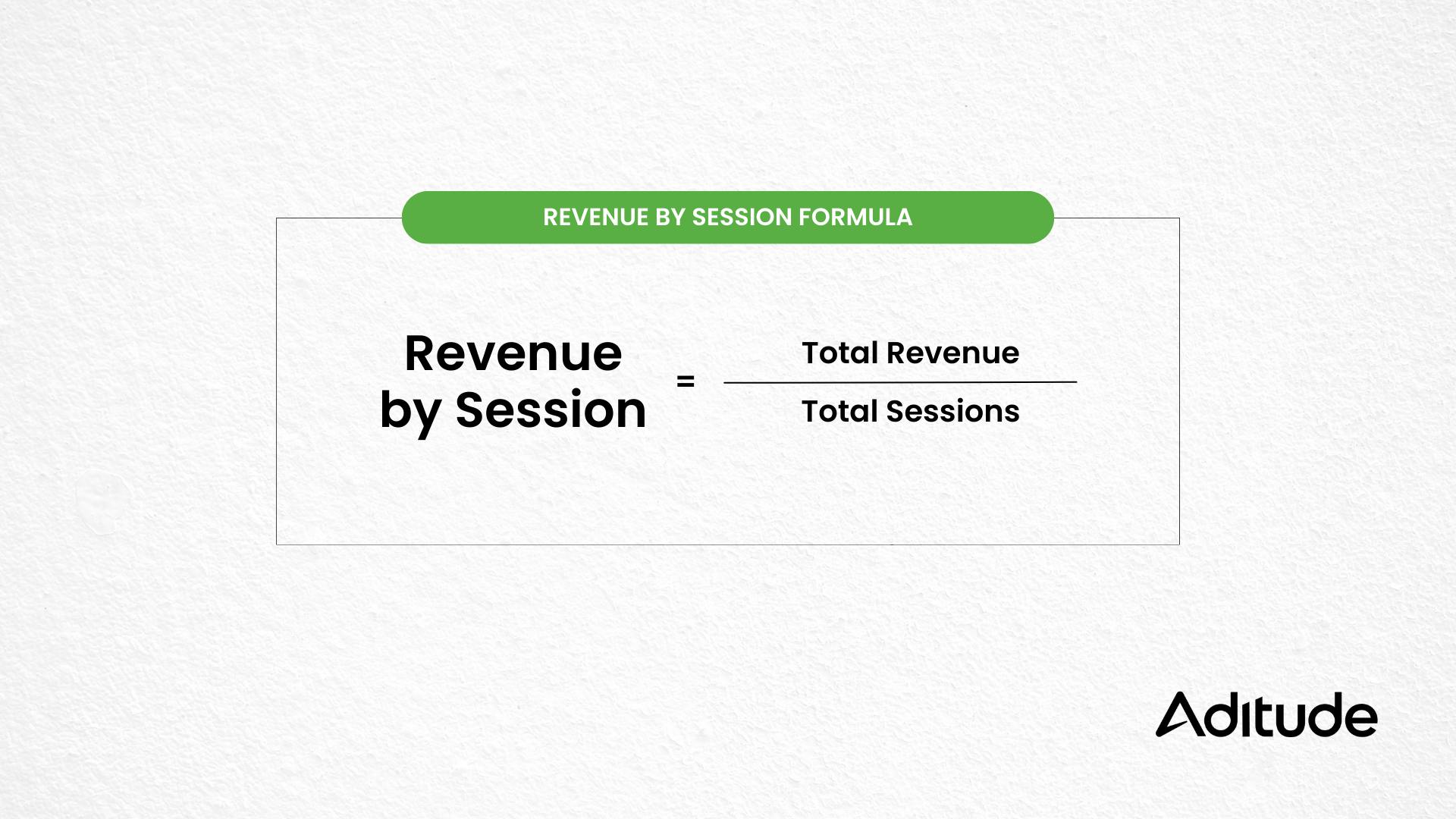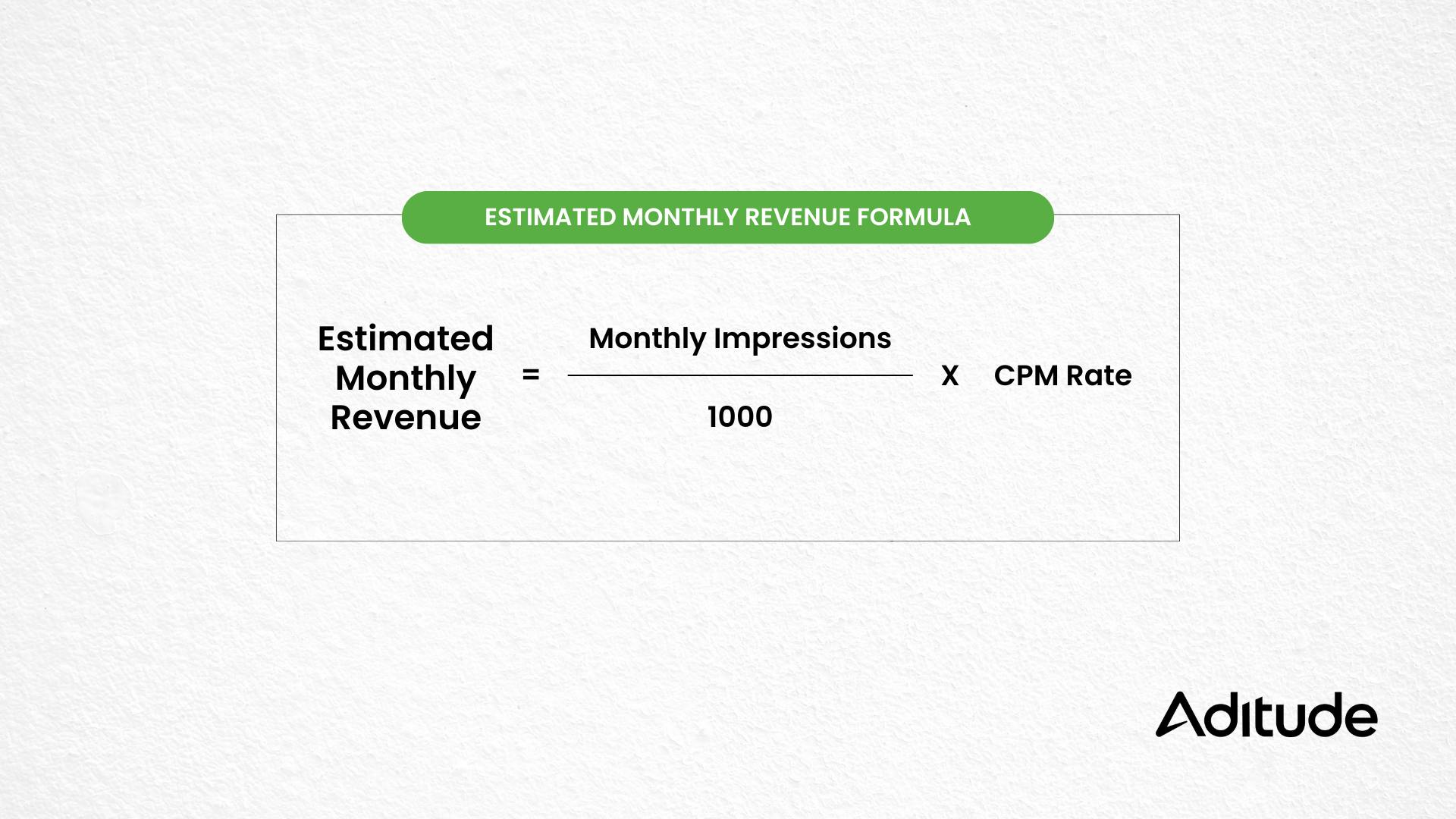Calculating Your Website's Ad Revenue Potential
We dive into the fundamental metrics used to calculate ad revenue. Each metric offers unique insights into the performance and profitability of online advertising, shedding light on how publishers can assess their ad inventory.

Understanding the intricacies of ad revenue calculation is essential for publishers. Ad revenue is the lifeblood of countless websites and digital platforms, making comprehending the metrics and factors that drive it vital.
In this blog post, we dive into the fundamental metrics used to calculate ad revenue. Each metric offers unique insights into the performance and profitability of online advertising, shedding light on how publishers can assess their ad inventory.
But ad revenue isn't solely about numbers and formulas; various dynamic factors also influence it. From website traffic volume and ad formats to user experience and site speed, these variables play a pivotal role in shaping the revenue potential of any website or app. Understanding these factors is crucial for optimizing ad revenue to its fullest extent.
So, let's explore the metrics and factors underpinning the ad revenue world, providing you with the knowledge and insights needed to navigate this complex terrain.
How is ad revenue calculated?
Ad revenue is calculated using RPM (revenue per mille), revenue by session, and CPM (cost per mille). These metrics are commonly used in programmatic advertising. Here's an explanation of each metric:
RPM (Revenue Per Mille):
- RPM is a metric that represents how much revenue you earn for every 1,000 ad impressions on your website or platform.
- The formula for calculating RPM is as follows:

If you earned $500 from 200,000 ad impressions, your RPM would be calculated as RPM = ($500 / 200,000) x 1,000 = $2.50 per 1,000 impressions. RPM is a useful metric for understanding the overall performance of your ad revenue on a per-impression basis.
Revenue by Session:
- Revenue by session measures how much revenue is generated during a single user's session on your website or platform. A session typically starts when a user arrives on your site and ends when they leave or become inactive for a specified period.
- The formula for calculating Revenue by Session is:

For instance, if your website earned $1,000 in total revenue from 500 sessions, the Revenue by Session would be Revenue by Session = $1,000 / 500 = $2 per session. This metric helps you understand the value each session brings regarding ad revenue.
CPM (Cost Per Mille):
- CPM is a metric used by advertisers to indicate how much they are willing to pay for 1,000 ad impressions of their ad on a publisher's platform (website, app, etc.). It is also known as the "cost per thousand impressions."
- Advertisers typically set a CPM rate when they buy ad space. Publishers (website owners) earn revenue based on this rate for every 1,000 impressions their ad space generates.
- CPM is calculated using the following formula:

For example, if an advertiser pays $5 CPM for an ad campaign that generates 100,000 impressions, the total earnings for the publisher would be calculated as Total Earnings = ($5 / 1,000) * 100,000 = $500. CPM is commonly used in programmatic advertising and ad networks to determine the value of ad inventory.
These metrics help publishers and advertisers assess the performance and profitability of online advertising campaigns and ad placements. RPM and Revenue by Session provide insights into the publisher's side of revenue generation, while CPM is more focused on the advertiser's perspective when buying ad space.
What factors impact ad revenue?
Ad revenue is influenced by many factors, and understanding these factors is crucial for optimizing your revenue. Here are the factors that impact ad revenue, including those you mentioned:
Website Traffic Volume
Your website's traffic directly affects ad revenue. More visitors generally result in more ad impressions, leading to higher revenue.
Ad Formats
The ad formats you use can significantly impact revenue. Video ads tend to have higher CPMs than display ads, for example. Choosing the right ad format for your audience and content can make a difference.
User Experience
A good user experience is crucial for retaining and attracting visitors. Excessive or intrusive ads can drive users away, leading to decreased traffic and lower ad revenue. Balancing ads with a positive user experience is essential.
Ad Ops Techniques:
- Refresh Rate: Controlling how often ads refresh can impact viewability and click-through rates.
- Lazy Loading: Loading ads only when they are in the user's viewport can improve page load times and user experience.
- Bid Caching: Storing winning bid information can help maximize revenue by reducing latency.
- Price Floor: Setting a minimum CPM price floor ensures you don't sell impressions at a lower rate than desired.
Demand Partners
The ad networks, demand-side platforms (DSPs), and advertisers you partner with can affect your ad revenue. Different demand partners offer varying CPM rates and demand quality.
Site Speed
Faster page load times can positively impact user experience and ad viewability. Slow-loading pages may lead to lower engagement and, subsequently, lower ad revenue.
Content Quality and Relevance
The quality and relevance of your website's content play a significant role in ad revenue. High-quality, relevant content attracts engaged users and can lead to higher ad engagement and revenue.
Geographic Location
The location of your audience can impact ad rates. Advertisers often pay more for impressions from users in certain regions or countries.
Seasonality and Trends
Ad revenue can fluctuate seasonally based on current events or trends. Some industries or events may attract higher advertising spending during specific times.
Ad Blockers
Your audience's ad blockers can impact revenue negatively. Users who block ads will not generate ad revenue, so it's important to consider this when assessing revenue potential.
Competition and Market Conditions
Market conditions, competition among publishers, and changes in the advertising industry can affect ad rates and demand for ad inventory.
User Engagement and Click-Through Rates (CTR)
Your audience's engagement with ads, measured by metrics like CTR, can impact revenue. Higher CTRs often lead to better revenue outcomes.
Ad Placement and Design
Where and how you place ads on your website and the design of ad units can influence their performance and revenue generation.
To maximize ad revenue, publishers often employ strategies, including experimenting with different ad formats, optimizing site performance, partnering with demand partners, and refining their approach based on data and user feedback.
How much ad revenue can a website generate?
The ad revenue a website can generate varies significantly from site to site and depends on numerous factors. There is no one-size-fits-all answer to this question. However, you can estimate potential ad revenue using CPM (Cost Per Mille) as a starting point. Here's how you can estimate your ad revenue potential:
- Determine Your CPM Rate: To estimate ad revenue, you need to know the CPM rate you can earn. This rate can vary widely based on your niche, traffic quality, geographic audience, ad format, and other factors. Research and consult with ad networks or demand partners to get an approximate CPM rate for your situation.
- Estimate Your Monthly Impressions: Calculate the monthly ad impressions your website generates. You can obtain this data from your ad network or platform, such as Google AdSense.
- Apply the CPM Rate: Once you have your estimated CPM rate and monthly impressions, you can calculate potential monthly revenue using the following formula:

For example, if you have 500,000 monthly impressions and an estimated CPM rate of $2, your estimated monthly revenue would be: Estimated Monthly Revenue = (500,000 / 1,000) * $2 = $1,000
Remember that this is a rough estimate, and several factors can influence your revenue.
Maximize Ad Revenue Potential with Aditude
Aditude's lightning-fast prebid wrapper, Cloud Wrapper, offers several key capabilities to help publishers maximize ad revenue potential. Here's how you can leverage Aditude's features and benefits to optimize your ad revenue:
- Hosted in the Cloud: Aditude's Cloud Wrapper is hosted and delivered from the cloud, which ensures faster processing and compiling of bid requests. This speed is crucial for accommodating many bidders on multiple ad units simultaneously.
- Custom Technology: With Aditude, each publisher gets isolated infrastructure on AWS, allowing for rapid development and testing. This level of customization reduces the risk of technical issues and security breaches, enhancing your revenue potential.
- Increases Ad Revenue: Aditude's proprietary wrapper technology is designed to improve caching, enhance site speed, and optimize overall ad performance. These improvements increase ad revenue, making your monetization efforts more effective.
- Flexible Demand: Aditude offers flexible integration options, allowing you to use your own Google Ad Manager (GAM) or theirs and your preferred SSPs. This flexibility empowers you to tailor your monetization strategy to your needs and preferences.
- User-Level Optimizations: Aditude supports sophisticated user-level optimizations, enabling you to enable or disable specific demand partners or SSPs based on their performance in different geographic regions. This feature helps you maximize revenue potential by focusing on high-performing markets.
- Time and Cost Savings: Aditude's expert team can quickly deploy your wrapper, enabling you to start monetizing sooner. Their support extends to handling customizations and providing ongoing assistance, saving you time and resources.
- Fully Managed Service: Think of Aditude as an extension of your team. We offer comprehensive support for onboarding, maintaining your ad operations, and strategizing how to improve your ad strategy. This hands-on approach ensures that you get the most out of their technology. With a Slack channel made just for you, you have direct access to our solutions team to provide you with the best support.
Key Features of Aditude
- Aditude's wrapper is incredibly lightweight at just 57 KB, reducing page load times and enhancing the user experience.
- Predefined settings, such as device type, lazy loading, GAM loading, bid caching, GDPR consent, and price granularity, are loaded simultaneously for seamless implementation.
- You can call specific SSPs only from certain geographic regions, allowing for targeted monetization efforts.
- Aditude's solution supports various ad formats, including web, AMP, video, and in-app mobile, ensuring compatibility across different platforms.
- It works seamlessly with all SSPs, providing flexibility in partner selection.
- Aditude supports first-party data for cookieless integration, helping you navigate privacy regulations and maintain ad revenue.
- Access to Cloud Layout for optimized article pages and Cloud Video integration within the same script contributes to faster page load times and improved user experience.
- Aditude offers a flexible commercial model to integrate easily with publishers.
By leveraging Aditude's Cloud Wrapper technology, publishers can optimize their ad operations, improve site performance, and maximize ad revenue. If you want to learn more about our Cloud Wrapper, email our team at adops@aditude.io or fill out this form, and our team will contact you. The platform's combination of features and benefits sets it apart as a valuable tool for maximizing revenue potential.
Conclusion
Ad revenue calculation is a multifaceted endeavor that hinges on metrics, strategies, and various dynamic factors. RPM, Revenue by Session, and CPM are crucial tools for understanding and optimizing ad revenue, enabling publishers and advertisers to make data-driven decisions.
However, the story doesn't end with metrics alone. Ad revenue is significantly influenced by website traffic, ad formats, user experience, optimizations, demand partners, site speed, and many other elements. This complex interplay of factors means no one-size-fits-all answer to how much ad revenue a website can generate.
Nonetheless, armed with an understanding of the key metrics and factors, you can make informed decisions to maximize your ad revenue potential. Whether you're fine-tuning your ad strategy, optimizing your website for better user experiences, or exploring innovative technologies like Aditude's Cloud Wrapper, you have the tools and knowledge to navigate the dynamic world of online advertising and unlock your website's full revenue potential.




